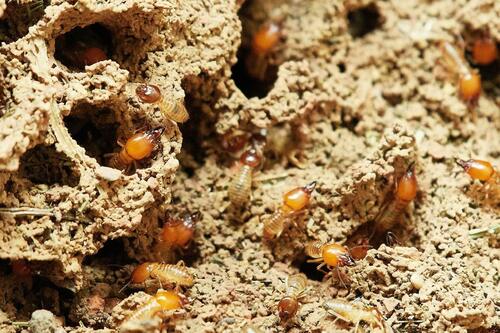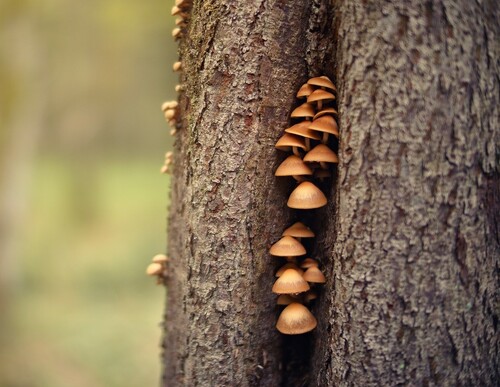How to Protect Trees from Pests Without Harming the Environment
Introduction
Protecting trees and greenery from pests without harming the environment helps to continue the cycle of greenery life.
Trees are a force of nature. No matter what size or type, they provide food, shelter, shade, and a boost to the air we breathe. But like other growing plants, trees are susceptible to damage from destructive insects like the red turpentine beetle .
But before you reach for the chemical pesticides, try these eco-friendly ways of protecting your trees from pests without harming the environment.

A Heart Shape Painted on a Tree Trunk – Image by Tom from Pixabay
Integrated Pest Management
Integrated Pest Management (IPM) evaluates the entire property when planning for insect and rodent control. IPM protects against future breakouts in trees, plants, landscaping, and nearby buildings (like a house or storage shed). It also allows for treating unwanted pests with organic repellents.

A Close-up of a Termite Habitat – Image by Roy Buri from Pixabay
Many insects crawling through trees are living their best lives by eating leaves, bark, wood, and sap. Among these wood-chomping borers are termites. Signs of termites in trees include hollow trunks, thinly dug “mud tubes,” and tiny holes at the base and roots. Environmentally safe insecticides and natural products are on the market, but when it comes to treating termites, solutions with permethrin, fipronil, and bifenthrin are among those noted for effectively solving the problem. Your best bet is to call a termite exterminating specialist.
Beneficial Insects
Trees are not only home to unwanted pests but also to nature’s “beneficial” bugs. Beneficial insects are categorized as pollinators, parasites, and predators. Before putting a pesticidal plan into action, learn which bugs are good to have around.
- Pollinators are bees, birds, butterflies, moths, and flies that feed pollen to trees, garden flowers, bushes, and wildflowers.
- Parasites lay eggs inside destructive bugs. Eggs hatch, and then the larvae feed on the buggy hosts.
- Predators like ladybugs and lacewings eat aphids and other bugs.
Homemade Insecticides
Mixing up your own bug deterrent is cost-effective, but whether it really protects against unwanted pests on all trees is hit or miss. Try these solutions on fruit trees.
- Oil, soap, and water: In a spray bottle, mix a half-tablespoon of vegetable oil, one tablespoon of dish soap, a half-tablespoon of Spinosad, and 16 ounces of water. Spray the tops and bottoms of leaves.
- Insecticidal soap: Combine three tablespoons of unscented soap––preferably in flakes—with one gallon of water. Apply this solution to leaves but rinse off after a few hours.
- Spicy oils: Pour a cup of vegetable oil into a gallon of water. Then add a tablespoon of strongly scented cinnamon oil. Chili powder is another option—sink two tablespoons into a cup of water and mix it well. Pour some dish soap into the solution, and then apply to tree leaves. These solutions go after thrips, aphids, and mites.
- Water: A powerful spray of good ol’ H20 knocks insects off tree leaves, but eventually, they’ll be back.
Organic Pesticides

Small Mushrooms Line a Tree Trunk – Image by Joe from Pixabay
Unlike synthetic chemicals, organic bug killers mostly come from plants or minerals. Applying organics on tree foliage and around root systems won’t damage the environment.
For example:
- Pyrethrum , rotenone, cryolite , and diatomaceous earth won’t cause harm to anything but plant-chewing critters.
- Bacillus thuringiensis , or BT, battles cabbage worms, tomato hornworms, armyworms, and a host of other leaf-chewing insects.
- Neem is safe for mammals, bees, birds, and plants, and only slightly toxic to aquatic creatures like fish and coral.
Insects are part of Mother Nature’s overall plan, and because they must eat, trees and shrubs are on the menu. But there are a few things you can do.
Clean debris from the yard and remove stagnant water to keep nesting mama bugs away. Plant strongly scented herbs and greenery like rosemary, mint, and lemongrass.
Contact a certified arborist to develop an environmentally sound treatment to sustainably protect your portion of the earth.
Guest Post Writer: Teri Silver is a journalist and outdoor enthusiast. She and her husband live on five acres with a vast lawn, three gardens, a farm, a pond, many trees, and a lot of yard work! The best parts of the year are summer and fall when homegrown veggies are on the dinner table.
Main Photo Credit: Benjamin Cheng on Unsplash


